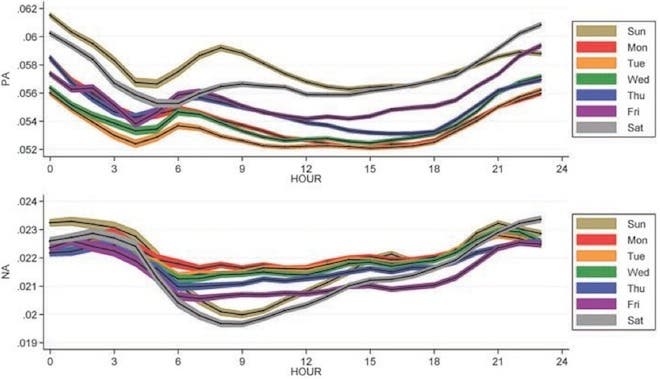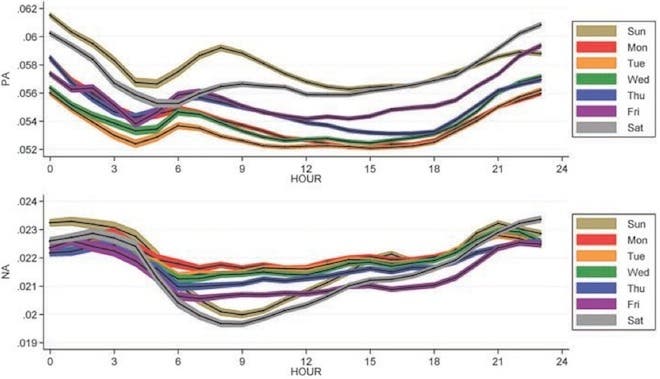Sociologists from Cornell University have scrambled through half a billion twits from the web to map out the way moods rise and fall for the populace in tandem, over time and across the world. The volume of data handled is what makes this study unique, as it allows for the proverbial ‘picking of the brain’ on a scale never before seen, incomparable to low-margin case-studies.

Reading the graph, it says: positive feelings peaking in the morning, dipping during work and rising at day’s end; while Friday afternoons are a lot lighter because the end of the work week. Pretty intuitive data, however in order to reach them, the researchers had to climb some pretty big heights.
There seems to be a new study concerning moods and behaviors every week to the point that’s becomes extremely confusing to form a general picture. This is mainly due to the fact that most of these said studies can only afford to collect data from as so many candidates and in as many conditions, as such it’s fairly typical to understand how two studies alike can render different conclusions.
“There’s a whole generation of lab work that’s been inconclusive,” said sociologist Scott Golder of Cornell University, co-author of the tweet analysis published Sept. 29 in Science. “Every study would have something different to say about what they saw in their subjects’ affective rhythms.
The advantage of twitter is that first of all you have a much broader audience to tap into and analyze, versus other methods, as the researchers saw and applied. Using Linguistic Inquiry and Word Count, a text analysis program that quantifies the emotional content of statements, Golder and co-author Michael Macy analyzed a total of 509 million tweets generated over two years by 2.4 million people in 84 countries. How’s this for a demographic? Using this data, the study authors were able to plot the mood trend set by world at various stages of the day and week.
“Twitter and Facebook, market transactions on eBay and Amazon: This is the stuff of everyday life” for much of the world, said Golder. “For a social scientist to have access to these records is a fantastic new opportunity.”
This is not to say that twitter can be considered a very reliable social metric or that past studies conducted live with subjects are obsolete, but the point still remains that this is a very clever way into tapping the social media pool. I’d love to see more crowd-sourced studies from the web as a means of complementing, and maybe proofing, genuine controlled studies. People twittering everything they do can now finally state they contribute something.
story via Wired









